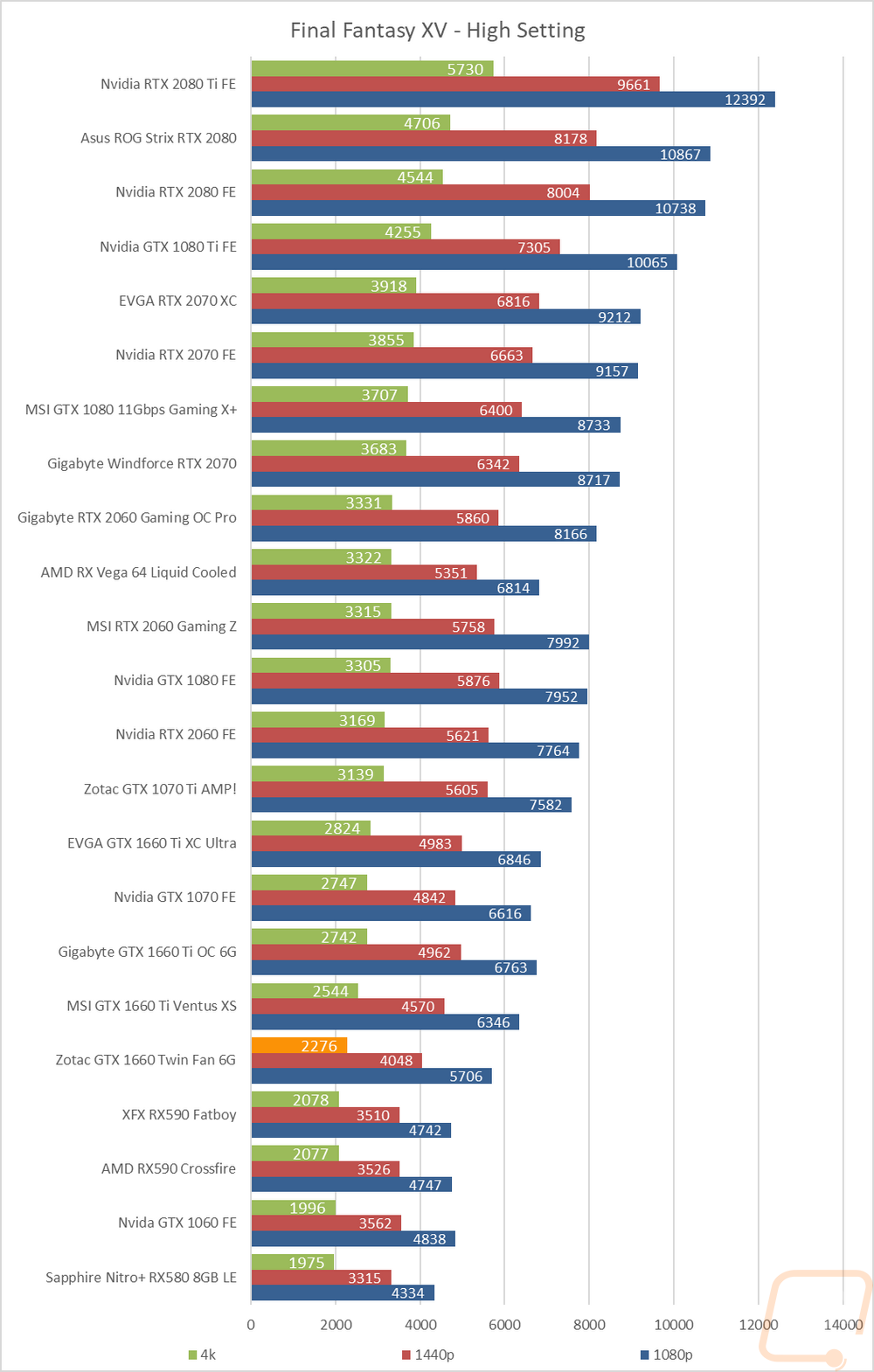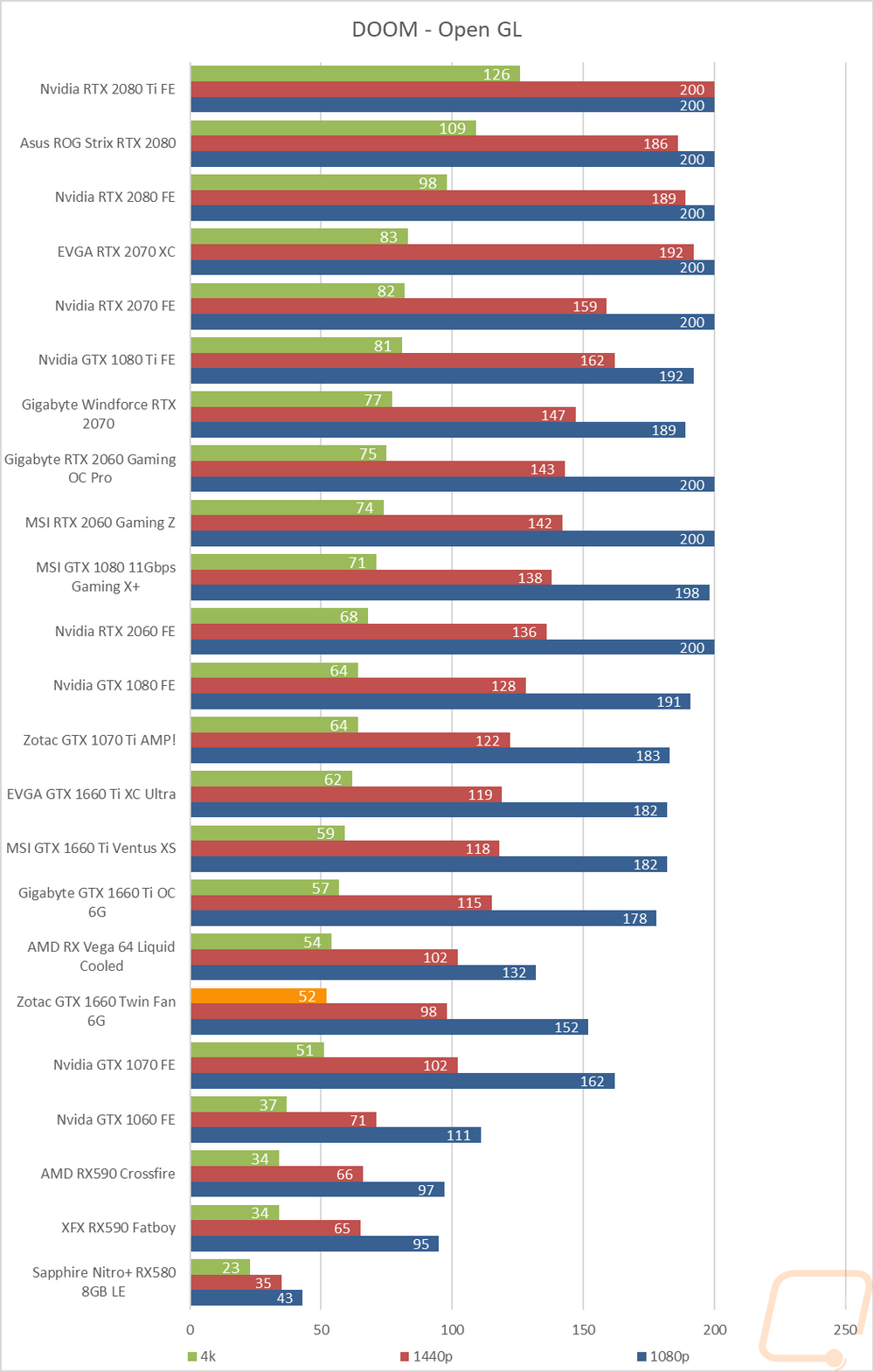In-Game Benchmarks
Now we finally get into the in game performance and that is the main reason people pick up a new video card. To test things out I ran through our new benchmark suite that tests 12 games at three different resolutions (1080p, 1440p, and 4k). I also slipped in a few variations on the same games for comparisons like DX11 to DX12, OpenGL to Vulkan, and a couple of games are just tested at their highest setting and lower but still high detail options to show the performance difference when things are turned down slightly. In total, each video card is tested 54 times and that makes for a huge mess of graphs when you put them all together. To help with that I like to start off with these overall playability graphs that take all of the results and give an easier to read the result. I have one for each of the three resolutions and each is broken up into four FPS ranges. Under 30 FPS is considered unplayable, over 30 is playable but not ideal, over 60 is the sweet spot, and then over 120 FPS is for high refresh rate monitors. This covers all of the games tested except Final Fantasy XV that we have a score rather than an FPS because they like to be different.
So how did the Zotac GTX 1660 Twin Fan 6G perform? At 1080p there wasn’t a significant difference in the playability graphs compared to the GTX 1660 Ti. You have three our the games tested running at over 120 FPS and 11 over 60 FPS. Just 3 were in that 30-60 range that is playable but needs some adjustment. 1440p however where the GTX 1660 Ti had a few over 120 the GTX 1660 had none and 9 over 60 FPS dropped down to 7 with the 30-60 range going from 6 to 10. So 1440p is still playable but a majority of the games weren’t silky smooth. Then at 4k the GTX 1660 really fell on its face with 10 tests unplayable and only 1 over 60 FPS.



Of course, the actual game performance numbers are the most important if you are crazy enough to sort through them all with me. So as expected given the specifications, the GTX 1660 Ti still has a leg up in performance. From there the GTX 1070 was ahead of the GTX 1660 and then in most tests, the GTX 1660 was ahead of the RX 580 and RX 590. There are a few games where the RX590 does outperform like Hitman in DX12 and it does a little better at 4k but only slightly and this is related to its 8GB of VRAM and 256-bit memory interface being able to handle the higher resolution a little better. But 4k for the RX590 or the GTX 1660 isn’t all that realistic so it matters very little which is the faster when both struggle at that resolution. One thing is clear though, the GTX 1660 is still significantly faster than the GTX 1060 and the RX 580 as well. At 1440p the RX 590 and the GTX 1660 are close in performance but at 1080p which is where I would recommend using this card, the GTX 1660 is faster.




















